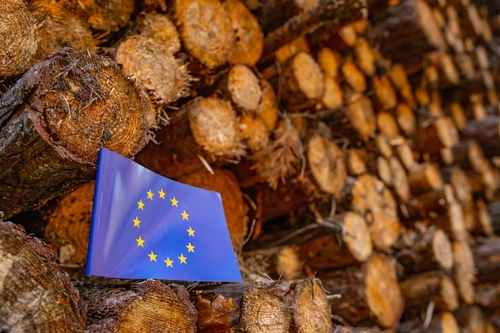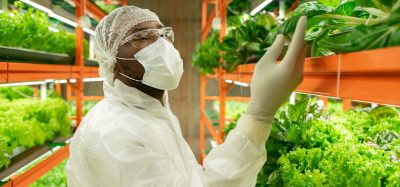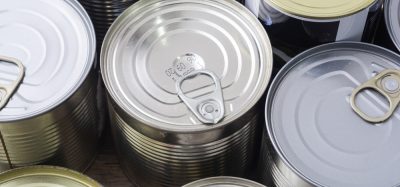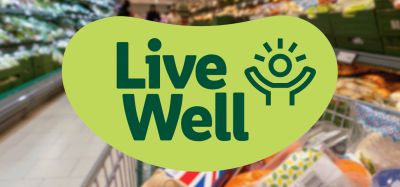EU releases controversial EUDR country risk benchmarking amid fierce environmental criticism
Posted: 23 May 2025 | Ian Westcott | No comments yet
The EU’s new deforestation risk benchmarking system has arrived early – but environmental advocates warn it falls short of protecting forests.


EU deforestation law draws sharp criticism from campaigners and industry. Credit: Shutterstock
The European Commission has released its much-anticipated country benchmarking under the EU Deforestation Regulation (EUDR) roughly one month ahead of schedule, marking a key milestone in its enforcement. The benchmarking system classifies countries into “low risk,” “standard risk,” or “high risk” categories based on the likelihood that commodities sourced from these regions contribute to deforestation and forest degradation.
The EUDR has become more about controlling political narrative than about controlling deforestation.
However, the benchmarking has immediately drawn strong criticism from environmental groups. Mighty Earth branded the system a “farce” and accused the European Commission of prioritising political convenience over genuine environmental protection.
Mighty Earth calls EUDR benchmarking a ‘farce’
Julian Oram, Policy Director at Mighty Earth, said:
“The EUDR has become more about controlling political narrative than about controlling deforestation. Almost since it came into force in June 2023, the European Commission has been doing its utmost to bend the law to the will of those who don’t like it – namely companies and governments that preside over, and benefit from, the destruction of the world’s precious remaining forests. Today’s revelation of which countries have been classified under the EUDR risk benchmarking system is the latest, and perhaps most bizarre, example of this capitulation.”
Mighty Earth points out that some of the world’s highest deforestation hotspots – including Brazil, Bolivia and the Democratic Republic of Congo – have been omitted from the high-risk list. Meanwhile, countries with documented deforestation issues, such as Canada, Ghana, Papua New Guinea and Romania, have been labelled low risk.
The NGO accuses EU member states with influential forestry and agribusiness sectors – notably Austria, Germany and Finland – of pressuring the Commission into watering down the risk classifications. This, they argue, severely undermines the regulation’s ability to protect forests and halt global deforestation.
How EUDR benchmarking works
The benchmarking classification guides how EU authorities conduct compliance checks, with inspection rates varying from 1 percent for low-risk countries to 9 percent for high-risk. The system is based on the latest forest cover and deforestation data from the Food and Agriculture Organization’s (FAO) Global Forest Resources Assessment and FAOSTAT commodity production data.
Countries are considered low risk if they meet certain thresholds related to forest loss, agricultural land expansion, and production levels. Only nations subject to United Nations or EU sanctions receive an automatic high-risk designation, with all others categorised as standard risk.
The Commission plans to review and update the benchmarking dynamically, with a first revision scheduled for 2026.
Implications for the food and beverage industry
With the EUDR set to apply fully from December 2025 for larger companies, and from June 2026 for smaller operators, companies in the food and beverage sector sourcing commodities linked to deforestation will face varying compliance requirements based on the risk classification of their supply origins.
Simplified due diligence applies for low-risk countries, while those sourcing from standard and high-risk areas must conduct thorough risk assessments and implement mitigation measures. This could increase operational complexity and costs for companies dealing with higher-risk regions.
As criticism grows over the political influences shaping the benchmarking, stakeholders will watch closely to see if the 2026 review delivers a more rigorous and transparent classification that truly supports the EU’s ambition to eliminate deforestation from its supply chains.
In a recent article with New Food Magazine, Professor Chris Elliott was also critical of the EUDR, warning of its “unintended and worrying consequences.” He highlighted the potential for food fraud, shifting deforestation to non-regulated commodities, and the ethical challenges posed by companies exploiting regulatory loopholes.
Related topics
Environment, Regulation & Legislation, Supply chain, Sustainability, Trade & Economy
Related organisations
European Commission, Food and Agricultural Organisation, Mighty Earth
Related regions
Africa, Central and South America, Central and South Asia, Europe









